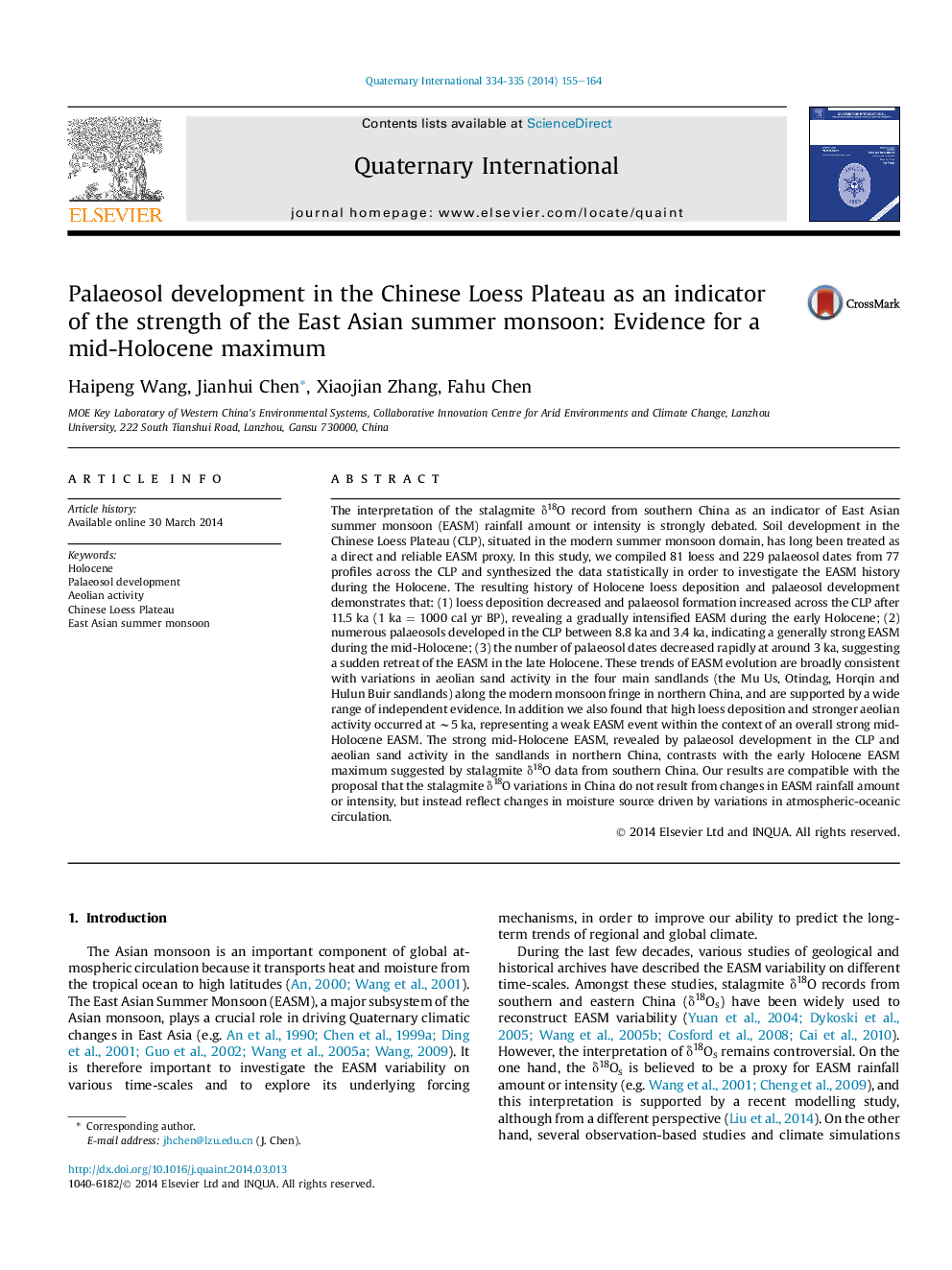| کد مقاله | کد نشریه | سال انتشار | مقاله انگلیسی | نسخه تمام متن |
|---|---|---|---|---|
| 1041505 | 1484160 | 2014 | 10 صفحه PDF | دانلود رایگان |
عنوان انگلیسی مقاله ISI
Palaeosol development in the Chinese Loess Plateau as an indicator of the strength of the East Asian summer monsoon: Evidence for a mid-Holocene maximum
دانلود مقاله + سفارش ترجمه
دانلود مقاله ISI انگلیسی
رایگان برای ایرانیان
کلمات کلیدی
موضوعات مرتبط
مهندسی و علوم پایه
علوم زمین و سیارات
زمین شناسی
پیش نمایش صفحه اول مقاله

چکیده انگلیسی
The interpretation of the stalagmite δ18O record from southern China as an indicator of East Asian summer monsoon (EASM) rainfall amount or intensity is strongly debated. Soil development in the Chinese Loess Plateau (CLP), situated in the modern summer monsoon domain, has long been treated as a direct and reliable EASM proxy. In this study, we compiled 81 loess and 229 palaeosol dates from 77 profiles across the CLP and synthesized the data statistically in order to investigate the EASM history during the Holocene. The resulting history of Holocene loess deposition and palaeosol development demonstrates that: (1) loess deposition decreased and palaeosol formation increased across the CLP after 11.5 ka (1 ka = 1000 cal yr BP), revealing a gradually intensified EASM during the early Holocene; (2) numerous palaeosols developed in the CLP between 8.8 ka and 3.4 ka, indicating a generally strong EASM during the mid-Holocene; (3) the number of palaeosol dates decreased rapidly at around 3 ka, suggesting a sudden retreat of the EASM in the late Holocene. These trends of EASM evolution are broadly consistent with variations in aeolian sand activity in the four main sandlands (the Mu Us, Otindag, Horqin and Hulun Buir sandlands) along the modern monsoon fringe in northern China, and are supported by a wide range of independent evidence. In addition we also found that high loess deposition and stronger aeolian activity occurred at â¼5 ka, representing a weak EASM event within the context of an overall strong mid-Holocene EASM. The strong mid-Holocene EASM, revealed by palaeosol development in the CLP and aeolian sand activity in the sandlands in northern China, contrasts with the early Holocene EASM maximum suggested by stalagmite δ18O data from southern China. Our results are compatible with the proposal that the stalagmite δ18O variations in China do not result from changes in EASM rainfall amount or intensity, but instead reflect changes in moisture source driven by variations in atmospheric-oceanic circulation.
ناشر
Database: Elsevier - ScienceDirect (ساینس دایرکت)
Journal: Quaternary International - Volumes 334â335, 17 June 2014, Pages 155-164
Journal: Quaternary International - Volumes 334â335, 17 June 2014, Pages 155-164
نویسندگان
Haipeng Wang, Jianhui Chen, Xiaojian Zhang, Fahu Chen,